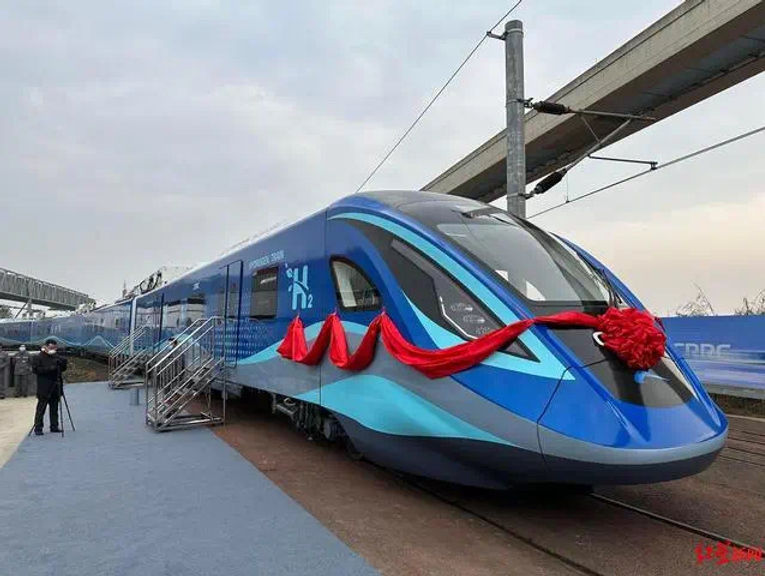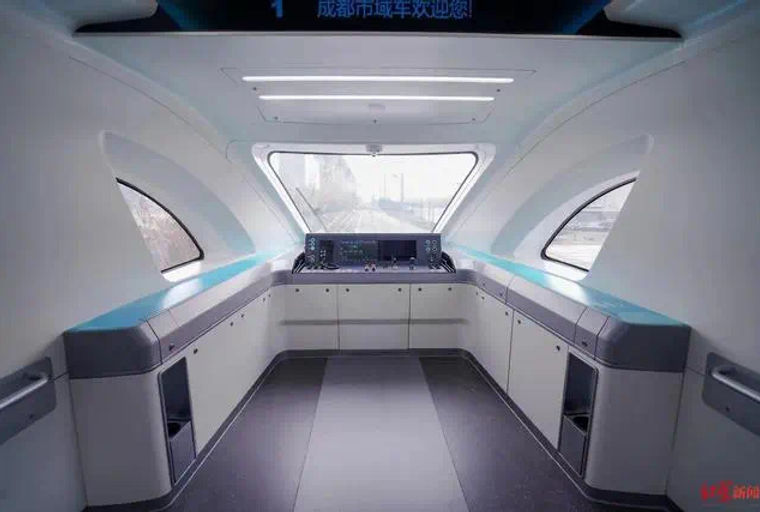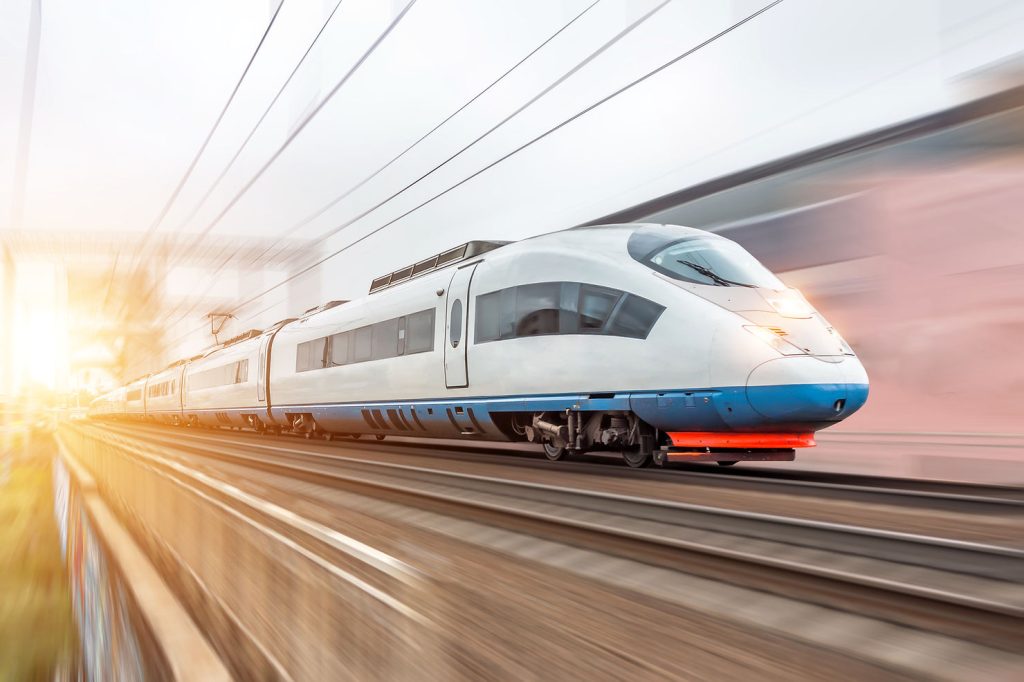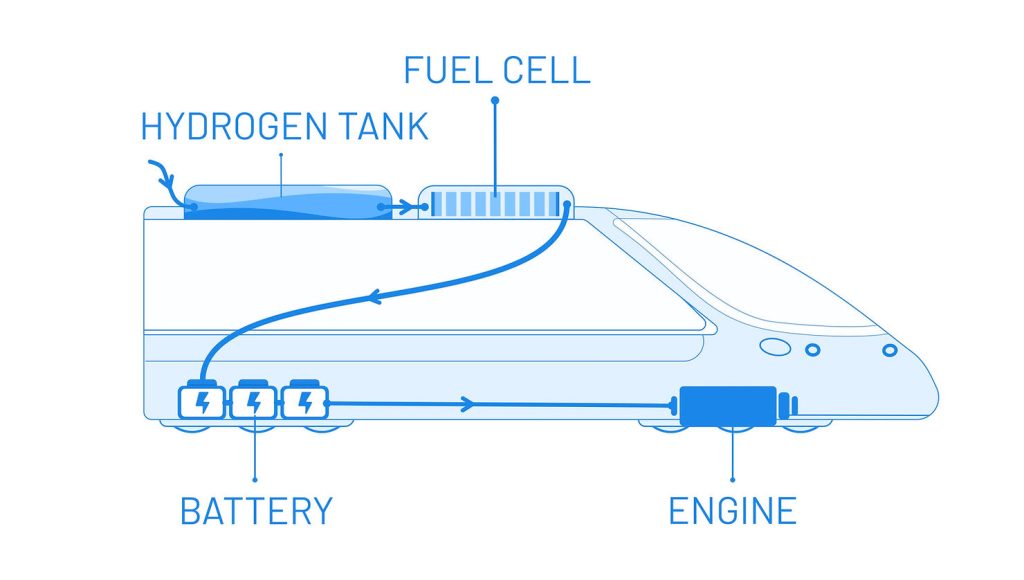
On the morning of 28th December 2022, China launched its first #hydrogen energy powered inter-city train in Chengdu, a bustling city of 16 million.

The development of the train was collaboration between China’s CRRC and Chengdu Railway Group. With a top speed of 160km/h and a range of 600km, the new inter-city environmentally-friendly trains are powered by a combination of hydrogen fuel cells and ultracapacitors – with no need for complex electrical infrastructure such as overhead electrical connections/components.

It’s a clear sign of how the vast potential hydrogen energy is being untapped. Not only is hydrogen one of the most abundant elements in the universe, it’s also light, energy-dense, and easy to store. This carbon-free fuel is highly versatile too, as it can be used to generate power for both industrial and domestic purposes.
From a cost point of view, hydrogen power makes complete sense. Here’s why:
There are only two types of power sources for modern trains: either diesel or electricity (and coal, if we look back to the 1800’s).

Diesel produces extremely dirty emissions, contributing to ground-level ozone which harms crops, trees and vegetation. The emissions are also harmful to the human respiratory system, while its carbon footprint contributes greatly to global warming.

Electric trains fare much better, with no emissions at point of use. But running high-speed electric trains (such as the bullet trains of Japan) require a lot of infrastructure: building electrified rails or overhead electrical systems, which are complex and expensive. It also needs a lot of time and resources for planning and construction. The massive amounts of energy the trains require come from a variety of sources – including electricity from fossil fuels. In some cases, they could be worse for climate than aircraft.
Hydrogen powered trains are an elegant solution that resolves the issues that come with diesel and electric trains. Since hydrogen power systems can be retrofitted to most current locomotives, this means there is no need to add complex infrastructure to existing rail systems (other than the occasional hydrogen refueling station). Hydrogen powered trains are zero-emissions, with the only emission being water and heat – or steam.
In short, it’s quick to implement, cost-effective, environmentally friendly and doesn’t harm nature in its way. There’s no need to build new trains, no need to electrify the entire train line, and no need to swap out the infrastructure. For governments and railways pursuing zero-carbon footprint goals, this is a great step forward.

Hydrogen powered trains run like electric trains, with speeds of up to 160km/h, quietly. Since hydrogen is energy-dense, the long range of hydrogen trains means it only needs refueling once every 600-1,000km or so. Hydrogen powered trains are well-suited for smaller, regional lines where the cost for conversion into an electric train line may not make financial sense.
Primarily, hydrogen can be produced through the electrolysis of water, without emitting carbon dioxide into the atmosphere. It’s then stored in tanks for use, and it can be transformed into electricity or synthetic gas, depending on application. On a hydrogen powered train, fuel cells convert the hydrogen into electricity, which feeds the batteries to provide a stable power source for the electric motors of the train.
Hydrogen can be stored in massive quantities cheaply. As a clean fuel source, it doesn’t need to be stored in the way batteries store their energy. As the Institution of Mechanical Engineers mention, “Hydrogen is therefore an energy vector. Like electricity it is a man-made form of energy that can be transported and converted into other forms of energy. However, unlike electricity, hydrogen’s energy can be stored on a large scale at relatively low cost.”
Globally, hydrogen power is gaining fast traction with railways around the world. UK is expected to start retrofitting existing trains with hydrogen power in 2023, starting with routes where electrical power isn’t feasible. It started with hydrogen powered train trials named HydroFLEX, a partnership between university of Birmingham and Porterbrook, a rolling stock company. The successful trials demonstrated a few truths: no harmful emissions, and trains ran as quietly as the electric versions. From Italy, to India, to Bavaria, to Netherlands and more, hydrogen-powered trains are also taking shape and are expected to become the norm.
Of course, there’s always the concern of fuel costs. The cost of hydrogen is expected to fall as it becomes commonplace, to become cheaper than diesel. Costs for hydrogen fuel are expected to fall starting in 2023.
With water/heat/steam as its only emission, hydrogen powered trains are a true return to ‘steam engines’ but with a zero-carbon footprint.
With all this in mind, we can summarize the benefits of hydrogen energy for use in mass transportation such as inter-city trains:
1) Zero emissions
The hydrogen-powered systems do not emit any harmful exhaust gases, it only produces electricity, water and heat (or steam). It leaves behind a zero-carbon footprint.
2) Simple infrastructure
Unlike electric trains, there’s no need to have the tracks electrified or have complex electrical lines running overhead – it only needs the occasional hydrogen refueling station. And existing locomotives can be retrofitted with hydrogen energy powerplants to run on hydrogen power.
3) Exceptionally long range
Since hydrogen is an energy-dense power source, trains can technically operate up to 1,000 kms without refueling, at speeds of up to 160kmh.
4) Fast refueling
There’s no need to charge batteries on board. Trains only need to top up their hydrogen fuel to continue operations. A 20-minute refueling time could let a hydrogen powered train run for 18 hours.
5) Fuel cells are cost effective
From a total lifetime cost point of view, fuel cells don’t require complex maintenance procedures as diesel engines. There’s no oil to change or filters to replace. Dealing with breakdowns, if any, are as simple as a swap-out of a plug-in component.
6) Quiet and comfortable
Diesel trains come with noise, emissions, and vibrations, with most of the noise coming from the engine exhaust and cooling fan.8 Like an electric train, Hydrogen fuel cells emit no noise or vibration, with water/steam as the only emission.
As it is, hydrogen power is stepping up globally, with governments of the world taking notice. On 8 December 2022, Saudi Arabia and China have signed an MOU on hydrogen energy. Hydrogen-powered railways represent an influential start to how it will be integrated into our industries as a power source. There’s no doubt it will eventually become part of our domestic needs as well.
At CM Venture, we are a team of scientists who look at investments from a scientific point of view. Hydrogen power was one of the areas we’ve been researching for a decade. One of our portfolio companies is Guofu Hydrogen Energy Equipment (GUOFUHEE), which is a supplier of integrated solutions for the hydrogen energy industrial chain. We were one of the early investors of GUOFUHEE and today they have become China’s number 1 hydrogen equipment maker, with a 46% market share in hydrogen fueling equipment.